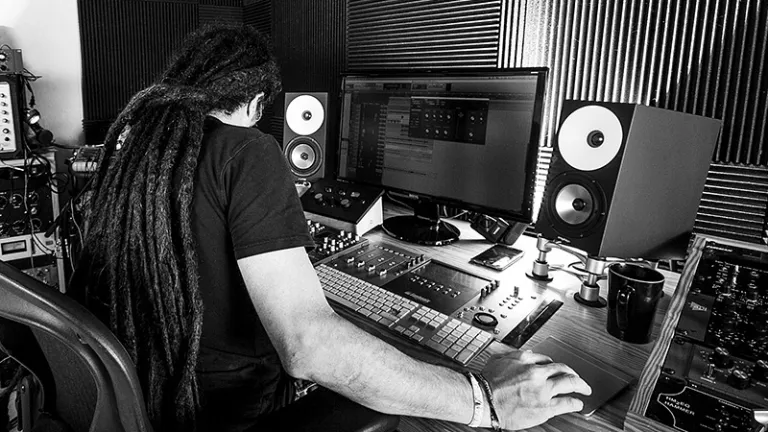Amphion One15 studio monitors mapping the best mixing route for Hans Mues
“I never used to like my mixes when I heard them played in the ¨real world¨. But now, I do !”
“I never used to like my mixes when I heard them played in the ¨real world¨. But now, I do !” says Hans Mues as he describes how Amphion’s One15s have impacted his professional work. Hans is a producer, recording, mixing, and mastering engineer, as well as an artist and a music educator from Mexico. He prefers being labelled as just a “studio guy” though from his diverse activities this sounds like an understatement. Hans recently recorded and mixed Enrico Chapela´s new album, as well as that of Kronos Quartet´s former cellist Jeffrey Zeigler. He has also been recording and mixing original music for major film studios such as Warner Brothers and Sony Pictures.

Hans was only eight when he first entered a music studio as a part of a choral recording. Since then, he always knew he would return. At the age of 15, he was back recording the first EP of his band Makina Negra. “Then, a few years later, we ended up recording in a 16-track facility, travelling to Milwaukee to attend the mix,” he remembers. Attracted to technology and machinery, Hans always felt an affinity to work in a studio.
“I like to think that every project is going to be the most important,” says Hans, and believes every project is unique. So he tries to approach each with a fresh mind. The key point, according to Hans, is in understanding the background and finding out the final creative destination “so that I can draw the best path from point A to point B – which is not always the straight line”. When it comes to gear, Hans says “I prefer to avoid just buying stuff and having it around without fully understanding what it can deliver.” He insists on testing the gear when not in a session in order to ensure he’s ready and “not losing precious motivation and inspiration” during the actual recording. “The great Greg Ladanyi once taught me that the best mic is the one that is ready to go fast,” remembers Hans.
Explaining his workflow, Hans says that he likes to record in parallel – “one channel straight from the preamp output to the AD, and one with compression and/or EQ.” He mixes in the analogue domain, using 32-Outs to various hardware EQs, dynamics and distortions, and reverbs to a FOLCROM Passive Summing Device and an SSL mixer. “I don’t usually use main bus processing, but very often I will use parallel drum bus compression and EQ,” shares Hans and adds “I tend to keep the stereo main bus and my mastering hardware free during the mix, so that at the end of the mix, when it is approved, just at the touch of a button I’m ready for mastering.” Among his preferred mastering outboard gear are his Ecoplate Plate Reverb, his modified AKGBX15, Burl Bomber and a modified half track Otari 5050. “I have a lot of modified gear. I don’t care about losing collector´s value over vintage or classic gear since I am not a collector. I focus completely on its performance,” he shares.
Hans says that monitoring and acoustics are the most important aspects in a studio. “This single element can make or break the final product and completely affects all your decision making,” says Hans. When it was time to upgrade monitors, he spent a lot of time reading the Gearslutz forum and testing five new models by different studio monitor brands before picking up the One15. “I liked the tone as they spoke to me. They won over my ears, workplace, and workflow,” says Hans.
Hans remembers mixing a project when he switched his One15s with another brand that appeared to produce an impressive and more compelling tone, resolution, and detail. The result was three pages of critical notes from the client. “I decided to put my One15s back in place, started over again without even checking the enormous list of corrections, then delivered the new mix to the client – who made only one minor suggestion but in a pleased voice,” remembers Hans. “In order to choose speakers to work with, you have to complete a project on them to know if they are the right ones for you. Choosing mixing speakers just by listening to music on them is the wrong strategy.”
In conclusion, Hans adds, “I don’t know how the One15s do it, but my mixes sound exactly the same everywhere I listen to them.” Another benefit of Amphion speakers Hans discovered is their optimum performance at low SPL. “95% of the time I mix at a low SPL and they still manage to point out the areas that need tweaking, they even prioritize the order of each tweak. And when they tell you the mix is finished, it really is! No surprises after.”
Learn more about:
One15 studio monitors >>>
Hans Mues >>>